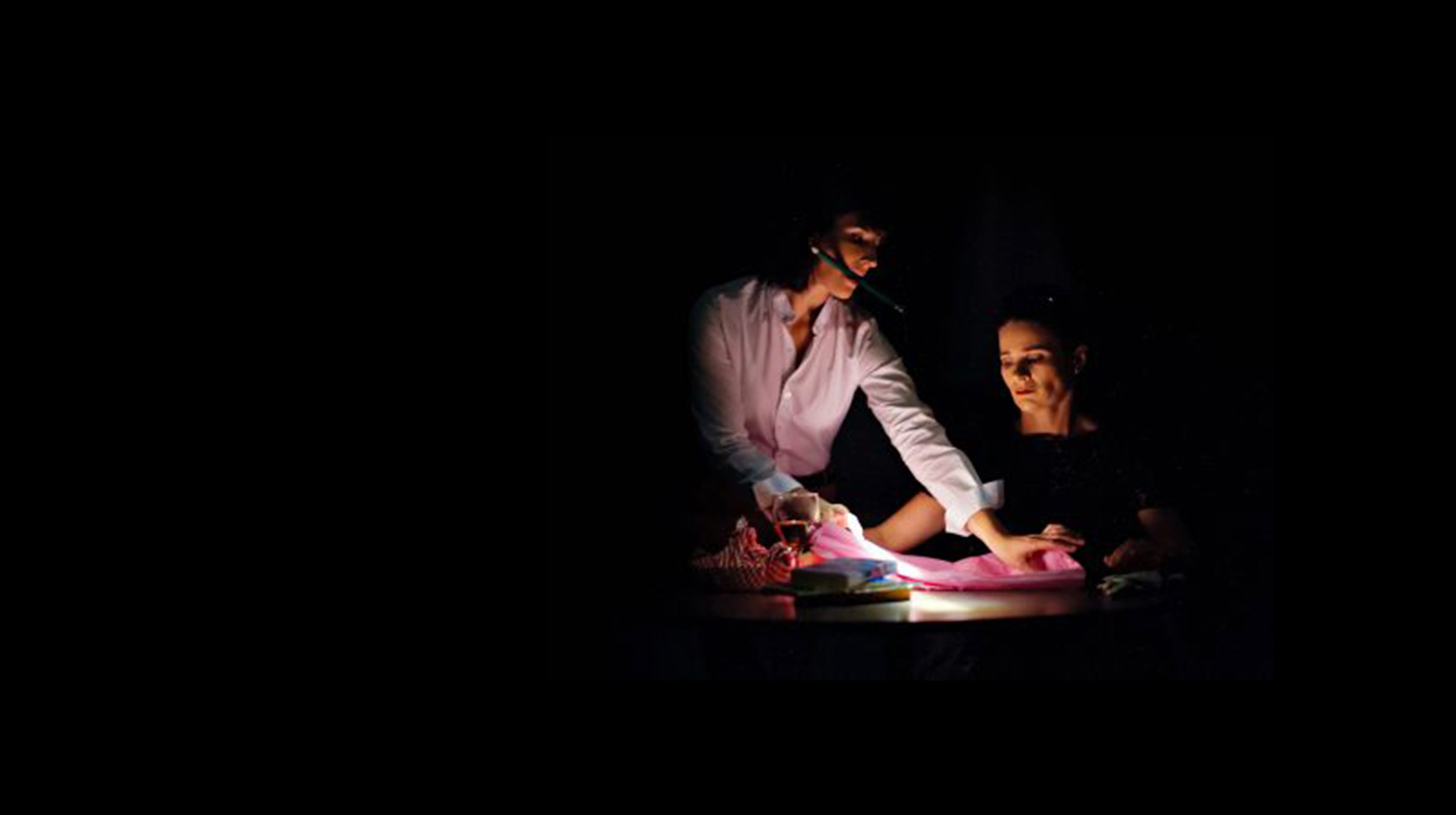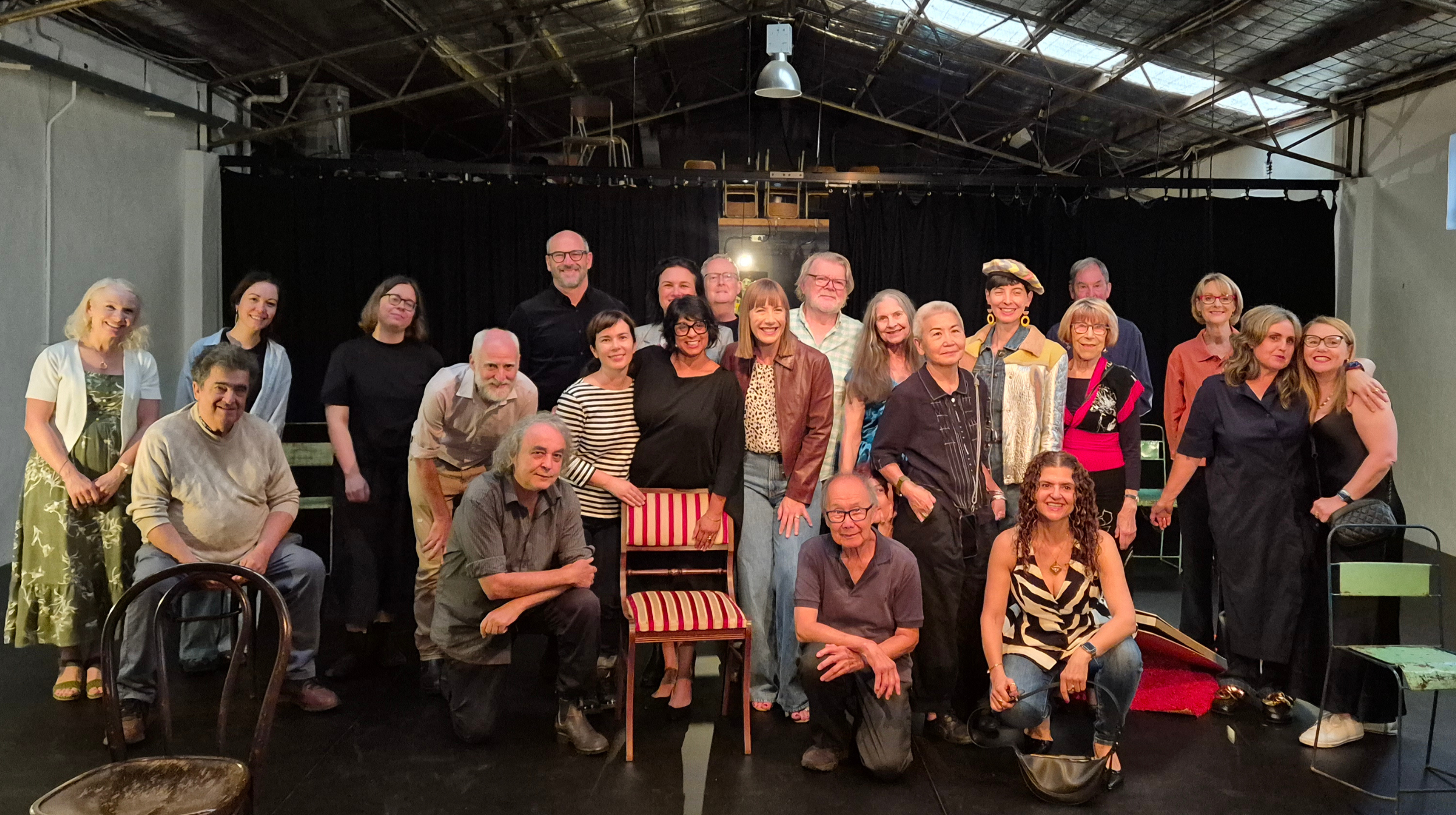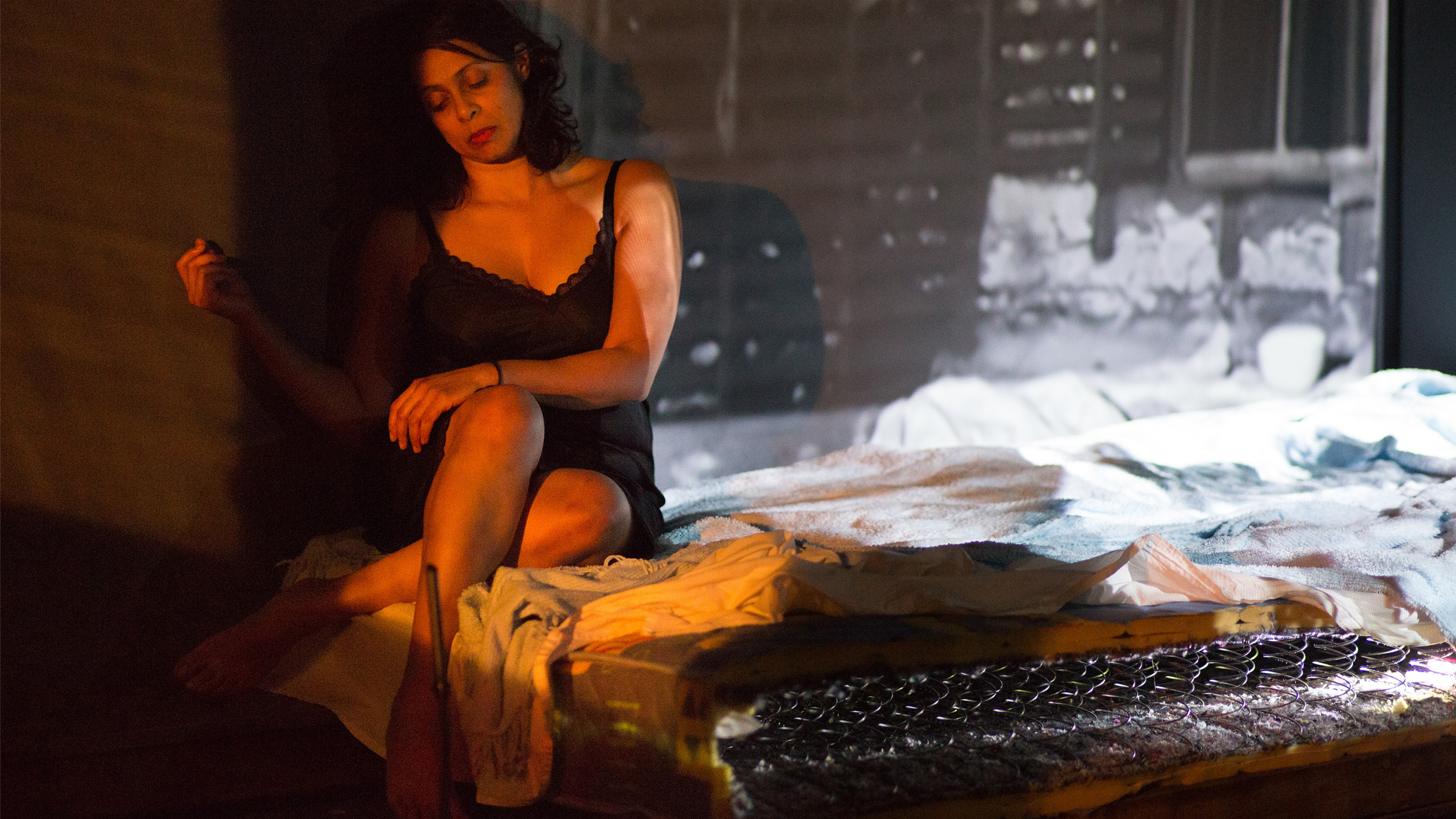
Pre-birthday drinks with Michelle St Anne
07.05.2019
Michelle St Anne reflects on the 20-year journey of The Living Room Theatre, describing its origins in dissatisfaction with the existing scene and her evolving practice shaped by artistic experimentation, collaboration, and a commitment to exploring difficult themes like gendered violence and environmental crises. She emphasises theatre as an emotional, immersive experience that invites audiences to co-create meaning, urging the company to embrace risk and community as it moves into adulthood.
In 2020, The Living Room Theatre will be 20. On the eve of this exciting milestone, Mark Bosch joined Artistic Director & CEO Michelle St Anne to chat about some of the company’s history and her practice as one of Sydney’s most prolific independent artists. Raise a glass and read on!
Michelle, you’ve been prolific as Artistic Director & CEO of The Living Room Theatre (LRT) for what will be 20 years next year. Whether that feels like an eternity or just yesterday, tell us how the company started.
LRT came about from my dissatisfaction with the prevailing scene. Sydney Front had just folded and the work I was getting at the time was culturally based. I was bored and I had more to say as a young performer. So a friend from university, Monica Brien, and I got together in my living room and started creating a new work. We originally conceived it as a school tour company however I don’t like children so that was a problem. I also wanted to explore darker issues in a controlled environment so that platform couldn’t really support that vision.
Across the last two decades, how have you felt your practice evolve? Can you recall any seismic shifts in this evolution, or has the change been more gradual?
Three years into LRT, I took a sabbatical to study at Victorian College of the Arts. I experienced a huge shift and found my artistic strength that has kept incessantly curious. Through the rich and diverse teachings led by Richard Murphet, I developed an ever-growing skill set and a vision which has sustained us over almost two decades.
It was there in Melbourne where I met my tribe. I met those interested in pursuing a new world, who wanted to ask bigger questions and pull out the narrative line beyond the usual arc. For the first time I felt artistically comfortable to experiment.
Over a decade later I discovered a book of all things — Composed Theatre. The book documents methodology of several theatre practitioners. All with different aesthetics. Last year I had the opportunity to work with one of the co-authors, David Roesner. Our meeting was profound in so many ways. It welcomed me to a bigger family, where I realised that my vision, methodology and aesthetic reached all the way up north to Europe. What was once loneliness dissipated and a renewed energy carried me forward.
Working in the realm of composed theatre is doubtlessly demanding — text, movement, sight sound, and so on, all brought onto the field. You’ve engaged in countless collaborations over the years, working with others to cover some of these bases. Which collaborations have been the most indelible for you as an artist?
Three instantly come to mind. Soncha Iacono, Jared Lewis and Alexandra Spence. Soncha and Alex are both composers who have uniquely stretched my palette and the understanding of how it can be meted out across space.
Jared gave me the gift of seeing light in a new way. When I saw his craftsmanship in my work Man 40 seeks Woman with Good Legs I saw the importance of the absence of light. I felt as if he walked inside my being as was able to transport the images into something rich and complex by adding a new narrative. I still carry his conversations with me and you will always see a doorway or window in my work.
You’ve frequently staged your work in unusual or everyday spaces, and have incorporated animals, improvisation, and incursions into the audience space. Generally speaking, I’ve read these aspects of your work as extreme provocations of theatre’s liminality, and furthermore would describe your work, if I may, as intensely psychological, even hyperreal. How do you want your work to reach into people’s inner lives?
I always think about my works as a series of vibrations. Both visually and aurally. I am an emotional theatre maker. That’s where I speak from and I believe I speak to. Using a universal sound or image I allow the audience a way in, an access point, and then once I get them inside, I provoke their imagination and open it up to allow them to make meaning out of what I have pieced together.
The meaning doesn’t come from what I have prescribed but rather what they bring to it. I see my audience as receivers and invite them to co-author the work with me. This is why I am drawn to hurt spaces, because it opens up the dialogue with them. It moves them away from being passive to active participants in the experience.
Among some of the themes to which you’ve recently been returning are gender and environmental issues. What draws you to these themes in particular?
It’s the sick point in our society. My work has always been about gendered violence, particularly in private places. However, since working at the Sydney Environment Institute, I’ve seen so many parallels between the two issues. I started to draw these together through metaphor, or in the case of Black Crows Invaded our Country, into an allegory. My next work brings these two together to build our capacity for a deeper understanding of the link between them.
If I trace this back, it arrives at my earliest memory. Steeped in the post-trauma of violence, the way I recall that evening remains with me today. It has dictated the stretch of time, the sparseness of my palette and the environments I evoke.
Violence is what I know. I know its sounds, smells and sights. I know how it lives in our bodies, in our buildings and in the world. I understand its complexities.
Now that The Living Room Theatre is about to hit 20 — and well and truly come of age — what advice would you leave with it for the long, winding road of adulthood?
Abandon fear, take risks and build your tribe. Funding the Artistic Director and hiring a company manager would also be a great thing!
Mark Bosch is completing a Bachelor of Arts with majors in French and Gender Studies at the University of Sydney, and will be completing an Honours project with an environmental focus in 2019. He plays the violin for leisure, occasionally freelances, and has since 2017 been a member of the Sydney University Symphony Orchestra. He also writes for the online youth classical music magazine CutCommon, and volunteers with the AYCC (Australian Youth Climate Coalition). Mark’s other interests include journalling and digital subcultures.


